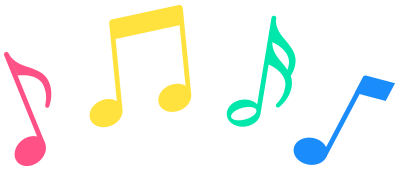Developing your “ear” for music is a fundamental part of becoming a confident musician & songwriter. Still, it can also be challenging to understand precisely where to start. By practicing incrementally more complex brain games, we can gain a deeper awareness when listening, songwriting, and performing. Also known as “aural skills” in the study of music theory & musicology, ear training is a field of study in which musicians use their hearing to recognize pitches, rhythms, melodies, harmonies, song structure, and even the history behind a song. This will be a lesson in three parts, wherein I will provide examples for playing with these dimensions of music. We will apply what we learn when we listen to stack the building blocks for constructing a strong “ear.”
World Listening: We don’t even have to have a song playing to observe pitch & rhythm as they happen around us. Close your eyes, open your ears & mind. What do you hear? Are the sounds loud or quiet? Pitched high or low? Rhythmically fast or slow? Don’t discredit the skill behind actively listening to the world around you. Awareness of your surroundings — how the pitches & rhythms interact like this — deepens your ability to perform with other musicians, your aural skills when applied to unfamiliar or complex music, and your focused presence in the current moment.
Melodies/Pitches/Intervals: Your ear may be more developed than you think. Take any song. Pick a song you know very well for the ease of starting. Hum the melody if you like. Based on the notes you hear in your head, can you try playing the melody on a piano or guitar? Just start by finding the first note. Get familiar with how that feels on your instrument. Now, think of the next pitch. Hum it, then play the note. If this is difficult for you, tuners can help with clarifying your accuracy. This process can be a little slow, but you are not just practicing finding the notes. This exercise improves your ability to identify intervals even if you can’t name them, and it creates familiarity with the full range of your instrument. Hearing any note or two and visualizing how you would play it is a skill that can bring you closer to developing relative perfect pitch.
Rhythms: Let’s continue with the same song you used for the last exercise. Think about the tempo of that song. Can you feel the pulse of the music? Metronomes can be helpful if you are still getting a feel for rhythm. Drum along, then try dividing those beats into new fragments. Don’t get too caught up in whether it sounds right; part of the learning is from playing around and figuring out what you enjoy. Additionally, clap out the rhythm of the melody you’re working with. Can you determine the length of each note or rest, whether it falls on the beat or off the beat? Bassists, in particular, are responsible for both rhythm & pitch; the rhythm of the notes they play contributes just as much complexity to a song as the pitches & intervals. If your song of choice has a bass line, study how the instrument interacts with the melody.
Harmonies/Chords: The next step is harmony once you have played around with rhythm & pitch. Any notes beyond the melody & bassline indicate the chords of a song. Harmony is one of the most complex parts of music because it can vary so much even between recordings of the same song. Often, a lot of focus is placed on identifying chords or chord progressions. Instead, I find playing around can teach more intuition than when you focus too hard on theory. Play a collection of notes together. Listen to how each pitch interacts; remove or add notes and observe how this influences the “feeling” you get when you play it. Play the song you’ve been working with, and occasionally add even a note or two. There are no wrong ways to do this. Be patient, be observant, remember to have fun.




